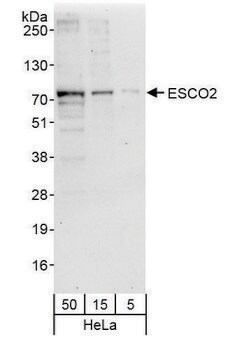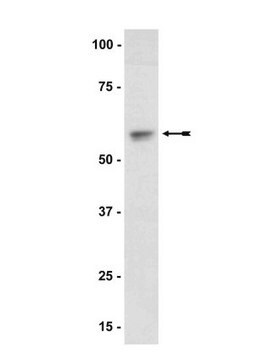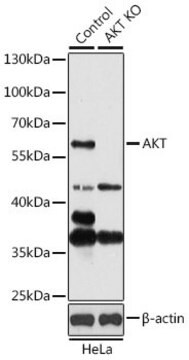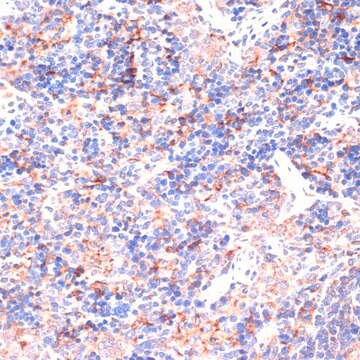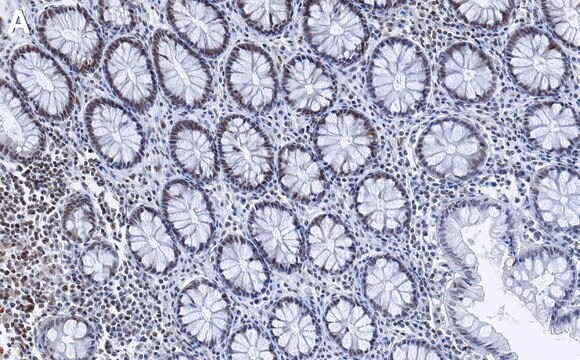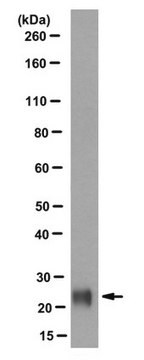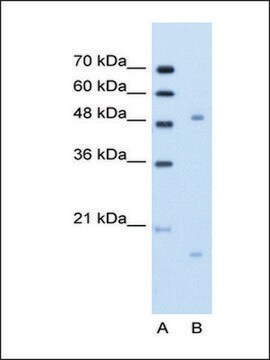PLA0238
Rabbit anti-AKT1 Antibody, Affinity Purified
Powered by Bethyl Laboratories, Inc.
Sinonimo/i:
AKT, AKT1m, CWS6, PKB, PKB alpha, PKB-ALPHA, PRKBA, Protein kinase B, RAC, RAC-ALPHA, RAC-PK-alpha, protein kinase B alpha, proto-oncogene c-Akt, rac protein kinase alpha, serine-threonine protein kinase, v-akt murine thymoma viral oncogene homolog 1, v-akt murine thymoma viral oncogene-like protein 1
About This Item
Prodotti consigliati
Origine biologica
rabbit
Livello qualitativo
Forma dell’anticorpo
affinity purified immunoglobulin
Tipo di anticorpo
primary antibodies
Grado
Powered by Bethyl Laboratories, Inc.
Reattività contro le specie
human
tecniche
immunohistochemistry: 1:500-1:2,000
western blot: 1:2,000- 1:10,000
Numero d’accesso
NP_005154.1
N° accesso UniProt
Condizioni di spedizione
wet ice
Temperatura di conservazione
2-8°C
Informazioni sul gene
rabbit ... AKT1(207)
Immunogeno
Stato fisico
Altre note
Esclusione di responsabilità
Non trovi il prodotto giusto?
Prova il nostro Motore di ricerca dei prodotti.
Codice della classe di stoccaggio
12 - Non Combustible Liquids
Classe di pericolosità dell'acqua (WGK)
nwg
Punto d’infiammabilità (°F)
Not applicable
Punto d’infiammabilità (°C)
Not applicable
Certificati d'analisi (COA)
Cerca il Certificati d'analisi (COA) digitando il numero di lotto/batch corrispondente. I numeri di lotto o di batch sono stampati sull'etichetta dei prodotti dopo la parola ‘Lotto’ o ‘Batch’.
Possiedi già questo prodotto?
I documenti relativi ai prodotti acquistati recentemente sono disponibili nell’Archivio dei documenti.
Il team dei nostri ricercatori vanta grande esperienza in tutte le aree della ricerca quali Life Science, scienza dei materiali, sintesi chimica, cromatografia, discipline analitiche, ecc..
Contatta l'Assistenza Tecnica.